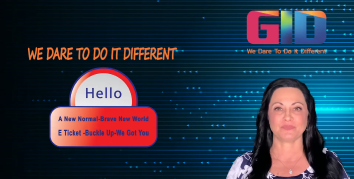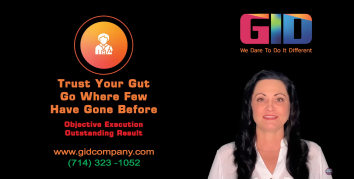The first step to succeed as an innovator is to patent your idea before someone else takes it to market. At GID Company, we work with entrepreneurs, inventors, and businesses across California, Florida, Utah, Texas, Arizona, and Georgia to turn concepts into protected innovations. Protecting intellectual property is not just about filing papers with the USPTO—it’s about safeguarding the potential of your product, securing investor confidence, and preparing for scalable growth.
When you decide how to patent an idea and begin the process to patent your idea, the conversation is not just about legal forms. It’s about the foundation of your brand, your market positioning, and your ability to stand out in competitive industries. Patents provide exclusivity, which allows you to commercialize products without fear of immediate imitation. GID Company ensures that every step—from capturing the essence of your invention to preparing technical documents—is aligned with business growth.
Many inventors wonder about the cost to patent an idea or whether the time and effort are worth it. The truth is, without patent protection, your work is vulnerable. GID Company integrates patent strategy with product development so that your invention does not just get filed—it becomes a market-ready asset. We guide you through complex steps while keeping the process smooth, affordable, and efficient.
How GID Company Helps You Patent Your Idea (From CA to GA)
At GID Company, we don’t just show you how to patent an idea; we build a structured path to patent your idea, protect it, and commercialize your invention. Working across major U.S. innovation hubs like Los Angeles, Miami, Austin, Phoenix, Salt Lake City, and Atlanta, we provide inventors with both product development expertise and intellectual property strategy.
Our End-to-End Process
From documenting your concept to creating professional prototypes, our team ensures your invention is well-prepared for a strong patent application. When you partner with us to patent your idea, we help coordinate patent searches, create accurate design specifications, and support patent attorneys with technical drawings and prototypes.
Collaboration with Patent Counsel
While only registered attorneys can file with the USPTO, our role is to make sure the technical and design side is flawless. If you are concerned about the cost to patent an idea, our structured documentation reduces rework and makes filings more efficient. This means fewer delays, fewer revisions, and ultimately a smoother process from start to finish.
Localized Expertise in Six States
GID Company tailors its approach depending on your location. A tech startup in Texas has different patent needs compared to a healthcare innovator in Florida or a consumer goods entrepreneur in California. Our local insight ensures that no matter where you are, your strategy to patent your idea matches your market and growth goals.
Can You Patent an Idea? The Eligibility Reality Check
Many inventors ask a simple question first: can you patent an idea? The answer is no—an idea by itself is not enough. To qualify to patent your idea, your concept must be turned into a tangible invention that is new, useful, and non-obvious. At GID Company, we help bridge this gap by turning abstract concepts into structured designs and working prototypes that meet eligibility requirements.
Idea vs. Invention: The Key Difference
An idea becomes patentable only when it is fully documented and can be reproduced by others in the field. For example, you cannot simply say you have a concept for a new type of smartphone case—you need to describe its materials, functionality, and unique benefits. If you are still unsure how to patent an idea, our team ensures your documentation and technical descriptions are precise and ready.
The Three Pillars of Patentability
The USPTO looks for novelty, utility, and non-obviousness. Without these, your application will be rejected. This is why understanding the cost to patent an idea is only half the story; the real challenge is proving you can successfully patent your idea. GID Company helps inventors in Arizona, Utah, and Georgia validate these pillars before moving forward, ensuring time and money are not wasted.
Design vs. Utility Patents
For inventors in California and Texas who are exploring product innovation, deciding between a design patent and a utility patent is crucial. Utility patents protect how something works, while design patents protect how something looks. GID Company evaluates your product to determine the best path and prepares your application package accordingly. By the time you ask how much does it cost to patent an idea, you’ll already know which type best fits your business goals.
How to Patent an Idea: Your Step-by-Step Map (What We Do + What You Do)
When you are ready to patent your idea, the process can feel overwhelming. That’s where GID Company steps in. We simplify every stage, from documentation to filing, ensuring your invention is both legally protected and market-ready. Understanding how to patent an idea is not just about forms—it’s about creating a clear, step-by-step journey that turns your concept into a viable product with long-term value.
Capture and Date Your Invention
The first step to patent your idea is proper documentation. Every detail matters—whether it’s a sketch, a material description, or a design update. GID Company provides templates and structured systems so your concept is recorded accurately. Without this foundation, your invention cannot progress, no matter how much does it cost to patent an idea in the long run.
Prior Art and Market Scan
Many inventors ask, can you patent an idea if it already exists in some form? The answer lies in a comprehensive prior art search before you patent your idea. This stage checks whether your invention is truly unique. GID Company coordinates these searches and combines them with market research, giving you clarity on both eligibility and commercial potential. This step prevents wasted costs and ensures your application stands on solid ground.
Choosing Between Provisional and Non-Provisional Patents
One of the most important decisions in learning how to patent an idea is whether to file a provisional or non-provisional patent. A provisional application secures your filing date while giving you time to refine your product. A non-provisional application, on the other hand, moves directly toward examination. GID Company guides you in choosing the best option, depending on your industry, your product stage, and your budget.
Drafting Your Application Package
Once your invention is ready, the next step is preparing the official application. To patent your idea successfully, your documents must include detailed specifications, technical drawings, and well-written claims. GID Company transforms your product designs into professional patent-ready documentation. We make sure nothing is missed, reducing the risk of rejections and delays that increase the cost to patent an idea unnecessarily.
Filing with the USPTO and Securing “Patent Pending”
After your application package is complete, it is submitted to the USPTO. At this stage, you gain the right to mark your invention as “patent pending.” GID Company supports inventors in California, Florida, Texas, Arizona, Utah, and Georgia by ensuring every filing meets USPTO requirements. With a solid application, you are one step closer to being able to patent your idea and turn it into a valuable protected asset.
Navigating the Prosecution Phase
After filing, your application enters the prosecution stage, where USPTO examiners review your submission. Many inventors underestimate how complex this process can be. If you are still wondering how much does it cost to patent an idea, remember that delays and revisions often add to expenses. GID Company helps minimize these costs by preparing clear responses, coordinating technical clarifications, and ensuring examiners have everything they need.
From Allowance to Issuance
When your application is approved, you move toward the official grant of your patent. To patent your idea effectively, this stage includes paying issue fees, marking your product correctly, and planning for maintenance. GID Company stays involved to make sure you not only receive a patent but also use it as leverage in marketing, fundraising, and scaling.
Considering International Protection
For many inventors, filing in the U.S. is only the beginning. If your product has global potential, international filings under treaties like the PCT become relevant. This decision often comes after you learn how to patent an idea in the U.S. first. GID Company helps innovators in hubs like Miami, Los Angeles, and Austin evaluate global opportunities, ensuring their protection extends to every market they aim to enter.
Cost to Patent an Idea: Budgeting Without Guesswork
One of the most common questions inventors ask is how much does it cost to patent an idea. The truth is that expenses vary widely depending on the complexity of your invention, the type of patent you pursue, and the level of professional support you choose. When you partner with GID Company, we help you plan your budget in advance, making sure every dollar spent contributes to protecting and advancing your innovation as you patent your idea.
Understanding Typical Patent Costs
The cost to patent an idea is influenced by many factors, including government filing fees, attorney services, technical drawings, and revisions during examination. For a simple product, the expenses may stay moderate, while more complex inventions often require higher investment. GID Company works closely with inventors in California, Texas, Florida, Utah, Arizona, and Georgia to ensure there are no financial surprises along the way.
Cost Optimization Through Smart Planning
When you set out to patent your idea, avoiding unnecessary revisions is one of the best ways to control expenses. GID Company provides accurate technical documentation, prototypes, and professional specifications that help minimize back-and-forth with the USPTO. This proactive approach reduces the overall cost to patent an idea and keeps your filing timeline on track.
Balancing Cost and Value
It’s natural to focus on how much does it cost to patent an idea, but the bigger picture is about value. A strong patent doesn’t just protect your product—it increases investor confidence, supports licensing opportunities, and helps you stand out in competitive markets. GID Company ensures that your investment leads to measurable business advantages, not just a legal certificate.
Timelines: How Long It Takes to Patent Your Idea
While costs are often a top concern, time is just as critical when you decide to patent your idea. Filing a patent is not an overnight process. It involves stages of preparation, submission, examination, and approval. At GID Company, we help inventors across different states manage these timelines, keeping projects on schedule while preparing their products for the market.
The Typical Patent Timeline
When exploring how to patent an idea, expect the process to take between 18 and 36 months on average. Provisional applications can secure an early filing date quickly, but non-provisional applications must pass through detailed USPTO reviews. GID Company guides you through each stage, helping you understand the steps ahead so you can plan launches and fundraising efforts accordingly.
Factors That Affect Timelines
Several factors determine how long it will take to patent your idea. The complexity of your invention, the number of claims, and the responsiveness of USPTO examiners all play a role. If your invention faces multiple office actions, the timeline may extend further. GID Company reduces delays by ensuring applications are thorough, accurate, and strategically prepared. This saves both time and money by minimizing the need for repeated revisions.
State Ecosystems and Their Influence
Inventors often ask, can you patent an idea faster in one location versus another? While the USPTO process is federal, your state ecosystem does influence how prepared you are before filing. Startups in Austin or Miami might secure prototypes and testing resources quicker than in other areas. GID Company leverages its local expertise in California, Florida, Utah, Texas, Arizona, and Georgia to align your preparation timeline with your business goals.
Managing Expectations and Staying Ahead
Many inventors focus only on how much does it cost to patent an idea, but time can be just as valuable. Every month lost to delays is a month where competitors can advance. GID Company helps you maintain momentum, combining product development with patent filing so your invention is always moving forward, both technically and legally, while we help you patent your idea without unnecessary delays.
Integrating Product Development with IP (Our Differentiator)
When you set out to patent your idea, the process should not be disconnected from product development. At GID Company, we integrate intellectual property planning with engineering, design, and manufacturing so your invention is protected and production-ready at the same time. This dual-track approach saves time, reduces costs, and maximizes the value of your intellectual property.
Parallel Paths for Speed and Protection
Inventors often ask how to patent an idea while still refining their product. GID Company ensures both processes move forward together. By developing prototypes and technical specifications alongside patent documentation, you avoid the delays that occur when one process is put on hold. This means your invention reaches the market faster, giving you the protection you need when you patent your idea.
Avoiding Design Workarounds by Competitors
A strong patent does more than protect your invention—it blocks competitors from creating close copies. If you only partially document your product, others may design around your claims. GID Company prevents this by aligning product architecture with detailed patent applications, ensuring that your design and function are fully secured. This not only reduces the cost to patent an idea later but also strengthens your long-term market position.
Building a Market-Ready Patent Portfolio
When you patent your idea, you’re not just filing for protection—you’re building a business asset. GID Company helps inventors in California, Texas, Florida, Utah, Arizona, and Georgia plan patent portfolios that cover both current products and future variations. This proactive strategy ensures you’re not asking how much does it cost to patent an idea every time you make improvements, but instead building a sustainable IP foundation.
DIY vs. Partnering with GID Company (Decision Matrix)
Some inventors consider filing patents themselves. While it’s possible to learn how to patent an idea independently, it can be risky without the right technical and legal support. At GID Company, we help you evaluate whether a do-it-yourself approach is truly cost-effective or if partnering with professionals provides better long-term protection.
When DIY May Work
If your invention is very simple and you have experience with documentation, you may attempt to patent your idea without professional support. However, most inventions require technical drawings, prototypes, and detailed descriptions that go beyond what the average inventor can prepare alone. Even if you know how much does it cost to patent an idea in basic terms, errors in preparation can lead to rejections that increase expenses.
The Risks of Going Alone
The biggest risk of DIY patent filing is overlooking critical details. If your claims are too narrow, competitors may exploit gaps. If they’re too broad, the USPTO may reject your application. GID Company ensures every detail is accurate, saving time and avoiding unnecessary costs to patent an idea. With our guidance, inventors don’t just file—they file strategically, and they patent your idea in a way that adds long-term value.
Why Partnering Pays Off
When you partner with GID Company, you gain more than filing assistance. You gain a team that understands how to patent an idea in alignment with product development, manufacturing, and market strategy. Our integrated approach ensures you don’t just receive a patent, but a market-ready invention that secures competitive advantage.
Common Mistakes That Kill Patent Value (And How We Prevent Them)
It’s not enough to patent your idea—you must patent it the right way. Many inventors make mistakes that weaken the value of their patents, costing them time, money, and opportunities. GID Company helps clients avoid these pitfalls through careful planning and professional execution.
Disclosing Before Filing
One of the most damaging errors is disclosing your invention publicly before filing. Many ask, can you patent an idea after showing it at a trade fair or posting it online? In most cases, this jeopardizes your eligibility. GID Company ensures you file early enough to patent your idea and protect your rights before any public exposure.
Weak Technical Documentation
Even if you understand how to patent an idea, your application will fail if it lacks technical depth. Incomplete descriptions or missing drawings leave room for competitors to bypass your claims. GID Company specializes in preparing thorough specifications and detailed illustrations that strengthen your case and reduce the cost to patent an idea over time.
Ignoring Design Coverage
Many inventors focus only on utility patents and overlook design patents. This leaves the look and feel of the product unprotected. At GID Company, we evaluate both function and appearance so you can patent your idea in the most comprehensive way possible. This dual strategy not only improves protection but also prevents competitors from creating close imitations.
Overspending on the Wrong Claims
Some inventors worry only about how much does it cost to patent an idea, but spending money on poorly crafted claims is wasteful. If claims are not aligned with your product’s unique strengths, the resulting patent may offer little real value. GID Company prevents this by focusing claims on the true differentiators of your invention, ensuring your investment delivers strong protection.
Wrapping Up: Your Next Best Step with GID Company
When you decide to patent your idea, you’re making more than a legal move—you’re making a business decision that impacts your product’s success, your funding opportunities, and your long-term growth. At GID Company, we make the process simple, structured, and tailored to your needs. We support inventors and entrepreneurs across California, Florida, Utah, Texas, Arizona, and Georgia, ensuring that every stage from documentation to product launch is aligned with patent strategy.
Why Choose GID Company
You may be searching for guidance on how to patent an idea or wondering about the cost to patent an idea. What sets us apart is our integrated approach, blending intellectual property protection with product development. This means you’re not just filing paperwork; you’re building a protected product ready for the market. Whether you’re an early-stage inventor or a growing business, our expertise ensures your patent filing delivers real business value while helping you patent your idea efficiently.
Taking Action Today
If you’ve been asking yourself, can you patent an idea that’s still at concept stage, the answer depends on preparation. At GID Company, we help refine ideas into patentable inventions that can withstand USPTO scrutiny. Don’t let uncertainty about how much does it cost to patent an idea hold you back. The next step is simple—schedule a consultation with us and begin turning your vision into a fully protected reality.

















